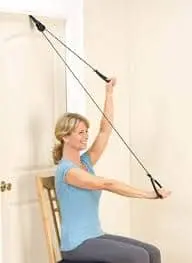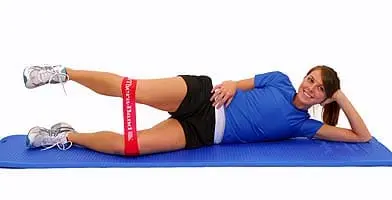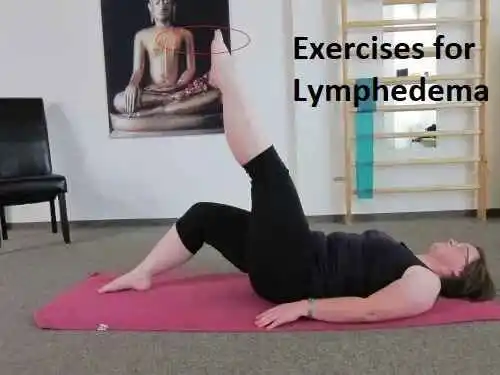16 Best Exercise For Shoulder Arthritis
Introduction:
A painful and restricting ailment that affects the shoulder joint, shoulder arthritis can result in stiffness, pain, and decreased mobility. Exercise for Shoulder Arthritis can help manage pain while improving the overall function of the shoulder joint.
The greatest exercises for shoulder arthritis will be covered in this article, focusing on motion-improving movements, pain relief, and strengthening the surrounding muscles for improved stability and support.
Due to its non-weight-bearing nature compared to the major joints of the lower limbs, the shoulder is the third most common site for arthritis after the hip and knee, just like in the case of the knee and hip joints, shoulder arthritis’s typical loss of cartilage frequently leads to severe pain, restricted movement, stiff joints, and a markedly reduced quality of life.
Even though there isn’t a proven cure for arthritis, there are a number of without-surgery and surgical treatments that can help manage pain and allow patients to continue active lifestyles.
Causes:
Shoulder arthritis can have numerous causes.
Among them are;
- Rheumatoid arthritis
Your body’s defense mechanisms are harming its healthy cells as this disorder is inflammatory. Because rheumatoid arthritis is an autoimmune system-mediated disease, the synovium and joint itself become inflamed, causing swelling. This condition damages the bone’s cartilage.
- Trauma to the shoulder
The cartilage surface may be harmed by a dislocation, fracture, or other serious trauma to the shoulder bones.
Your shoulder is stabilized while you rotate the “ball” of your upper arm at the base of your shoulder blades by the cooperation of the four muscles that surround your shoulder joint, or rotator cuff. People frequently get chronic rotator cuff injuries as they age. Sometimes these tears get so big that the head of the humerus misaligns and rubs against other humerus bones, which causes cartilage to degenerate and arthritis.
- Osteoarthritis
Patients typically experience this after a particular age. People begin to suffer from this ailment after a particular age due to lifestyle choices or workloads. Cartilage may break down, soften, crack, or tear away with time. The previously hidden bones are now visible and are beginning to rub or brush against one another.
Signs and symptoms:
- Pain in the shoulder joint
Symptoms like this are the most prevalent. Initially, your shoulder pain might only be experienced during movement. Pain may impact at any time of day, with or without arm movement, as the condition progresses. Lifting large objects or after exercising may make your pain worse. In cases where your arthritis is severe, the pain may radiate down your arm and maybe to your elbow or wrist.
- Loss of flexibility and stiffness
Shoulder tightness and decreased range of motion are two possible symptoms. Due to these symptoms, daily tasks including driving, cleaning, dressing, and bathing may become difficult.
- Your shoulder joint may be clicking, popping, grinding, or cracking noise
The lack of cartilage, that makes the surface hard is the factor that causes these sounds. The noises are audible whether you’re in pain or not.
- Difficulty in sleep
It is hard to find a sleeping position that is relaxing. Put a pillow beneath the elbow of the side that hurts if you sleep on your back. This keeps your shoulder in a more supported posture. It also releases the supporting joint structures from strain. Some people find that recliner sleep helps them sleep through the night without experiencing pain.
Advantages of Shoulder Exercises:
Combining aerobic exercise with stretching and strengthening can have several advantages, such as:
- lessens pain
Muscles that are strengthened through exercise support joints more effectively. Avoiding activities that hurt or create pain can lead to shoulder muscle atrophy and increase the chance of developing shoulder arthritis. By strengthening the surrounding muscles, such as the rotator cuff and scapula, the glenohumeral joint of the shoulder can be stabilized. Pain can be reduced by this stability, which protects bones from shock and friction and keeps them from moving.
- Help with keeping the system functioning
A person with chronic shoulder pain may find it difficult to go about their everyday business or engage in sports and favorite activities. Limitations in daily activities might cause distress and depression. People with shoulder arthritis may be able to resume many of their favorite activities and everyday routines with the help of exercise and potential physical changes.
- Improves function and movement
Being inactive due to shoulder pain exacerbates the joint pain issue by creating stiffness, which makes the pain worse. Exercise regularly improves shoulder function by maintaining the shoulder joint and surrounding muscles in good form.
Risk factor:
The main risk factor is age.
Additional risk factors consist of;
- Rotator cuff tears
- Previous shoulder injury
- More prone to females
- Obesity
- Old age
- Shoulder dislocation
Take these safety measures to consider before beginning an exercise program:
It’s important to consider a few safety measures and minimize the benefits before beginning any exercise program. See your doctor or physical therapist for recommendations on the exercises that are most effective for your particular issue.
It’s critical to pay attention to your body and refrain from exerting force when in pain. Exercise-related soreness is common, but chronic or severe soreness could indicate excessive activity. Begin with low-impact exercises and progress to more difficult ones as you gain more pain tolerance.
To stop injuries from occurring again, it’s critical to maintain proper form and technique. See a doctor for help if you’re unsure how to carry out an exercise program correctly. Warm up your joints and muscles before starting any activity to help them become ready for the work at hand.
Exercise For Shoulder Arthritis:
You may start your journey to feeling stronger and more flexible, which will make using your arms for daily tasks easier and less painful, using the following Best Exercises.
Shoulder shrug
- First, locate an area on the ground where you can stand comfortably.
- After inhaling deeply, lift your shoulders to your ears.
- Squeeze your scapulae together as you bring your shoulders back to their natural posture.
- Exhale and let your shoulders drop.
- Observe how your shoulders are stretched when you extend your elbows forward.
- Then return to your neutral position.
- Then relax.
- Repeat this exercise 5-10 times a day.
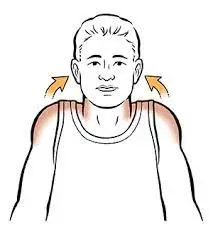
Shoulder pulley
- Tighten the shoulder pulley onto the door while sitting exactly beneath it.
- Place your hands palms up and down on the pulley, holding both ends.
- Raising your right arm is possible by using your “good” hand to pull the handle down to and over your knee.
- Raise your arm as high over your head as you can while maintaining flexibility.
- Then return to your neutral position.
- Then relax.
- Repeat this exercise 5-10 times a day.
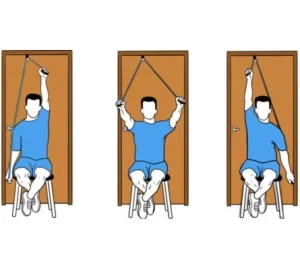
Wall slide with a foam roller
- Starting at the floor, take a comfortable position and place your hand on the wall.
- Using your hands, hold a small, light roller against the wall.
- Stretch your front arms out in front of you.
- Tighten your shoulder blades at this moment.
- Extend your elbows and then slowly elevate your forearms up the wall.
- Then return to your neutral position.
- Then relax.
- Repeat this exercise 5-10 times a day.

Face pull
- Attach a grip or rope to a cable machine so that it is at chest height.
- Place your feet shoulder-width apart and face the machine.
- With both hands, palms facing each other, hold the rope or handle.
- Pull the rope or handle towards your face while retracting your shoulder blades and maintaining a high elbow stance.
- Squeeze your shoulder blades together and hold this position for a few seconds.
- Return the rope or handle to its beginning position slowly.
- Then return to your neutral position.
- Then relax.
- Repeat this exercise 5-10 times a day.
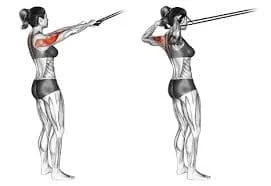
Chest expansion
- Start on the ground in a comfortable standing position.
- Using both hands, hold an exercise band, strap, or towel behind your back.
- As you pull your shoulder blades closer together, extend out over your chest.
- Gaze up toward the ceiling with a raised chin and eyes.
- Hold this position for a few seconds.
- Then return to your neutral position.
- Then relax.
- Repeat this exercise 5-10 times a day.
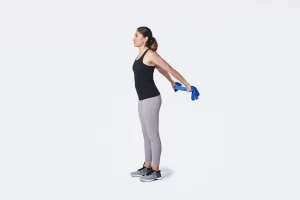
Pendulum
- On the floor, assume a standing position.
- Using a counter or table allows you to keep your center of gravity stable.
- The opposite arm should hang loosely at your side.
- Make a small, calm arm swing back and forth.
- As you repeat the exercise, step your arm from side to side before moving it circularly.
- Then return to your neutral position.
- Then relax.
- Repeat this exercise 5-10 times a day.
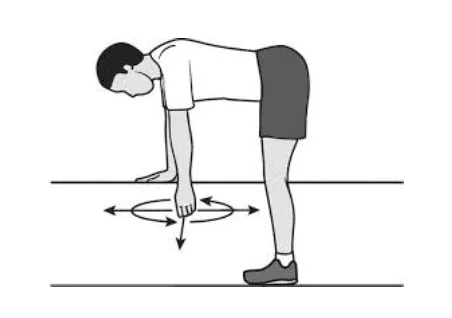
Resistance Band Rows
- First things initial, grab a seat on the floor and relax.
- Keep your posture completely extended.
- Maintain your back straight.
- Wrap the resistance band around the bottoms of the feet.
- After that, hold one end in each hand.
- Put pressure on your shoulder blades.
- Now move the band toward your midsection.
- Hold this position for a few seconds.
- Then return to your neutral position.
- Then relax.
- Repeat this exercise 5-10 times a day.
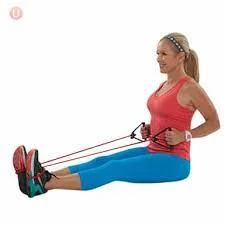
Isometric-Shoulder-Abduction
- Make sure your body is level with the wall as you stand around away from it.
- You should position the shoulder you want to work out against the wall.
- Firmly grasp the wall with your fist.
- For a little bit of comfort, you might want to use a towel that has been folded up.
- Gradually press against the wall while bending your arm to the side.
- Hold this position for five seconds.
- Release the force on the wall gradually.
- Then return to your neutral position.
- Then relax.
- Repeat this exercise 5-10 times a day.

Scapular squeeze with arm lift
- First, take the prone position on the bed.
- Turn your hands inside out while maintaining your arms at your sides.
- Then squeeze your shoulder blades together.
- Next, raise both arms equally.
- Hold this position for a few seconds.
- Then return to your neutral position.
- Then relax.
- Repeat this exercise 5-10 times a day.
Towel shoulder stretch
- Start by taking a comfortable, ground-level standing position.
- Grab a long towel, like one you would use for a bath or swim.
- With one hand, hold the towel and hang it across your back and shoulder.
- Extend your right shoulder while placing the towel on your left shoulder and grasping it with your left hand.
- Lift the towel and place your hands behind your back carefully.
- It’s beneficial to give your shoulders a quick stretch on the front or side.
- Then return to your neutral position.
- Then relax.
- Repeat this exercise 5-10 times a day.
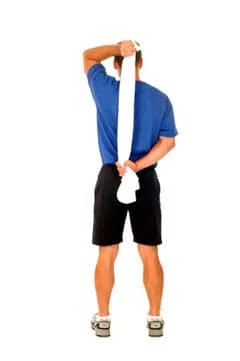
Wand flexion
- First, locate a peaceful area on the ground.
- When holding a stick, your hands should be shoulder-width apart.
- Allow your unaffected arm to raise the affected arm as you relax the affected arm.
- As you perform the movements, take caution when moving.
- Hold this position for a few seconds.
- Lower your arms slowly.
- Then return to your neutral position.
- Then relax.
- Repeat this exercise 5-10 times a day.
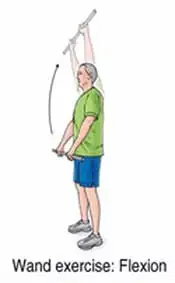
Wand extension
- First attempt to get yourself on the ground in a comfortable standing position.
- Put both hands behind your back to grasp a stick.
- Utilizing the stick, move backward.
- Hold this position for a few seconds.
- Then return to your neutral position.
- Then relax.
- Repeat this exercise 5-10 times a day.
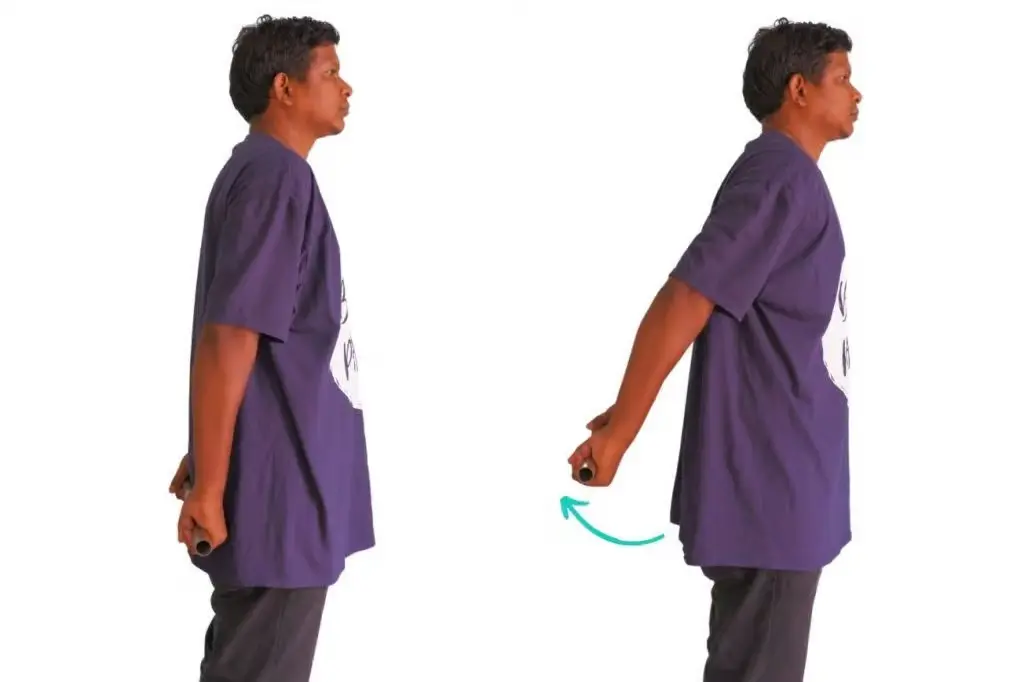
Wand abduction-adduction
- Begin on the floor in a comfortable standing position.
- Gripping a stick requires both hands.
- In between your front thighs, squeeze the stick.
- Your elbow should remain straight as you use one arm to try to push the other arm up and to the side.
- Then return to your neutral position.
- Then relax.
- Repeat this exercise 5-10 times a day.
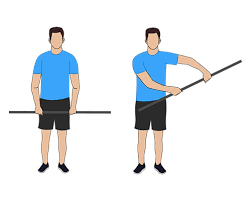
Arm Crossover Stretch
- First, locate a position on the ground that is suitable.
- Extend your arm and raise your right hand to your chest.
- Your left hand can be used to hold your arm or to move it into the space left by your left elbow.
- Hold this position for a few seconds.
- Then return to your neutral position.
- Then relax.
- Repeat this exercise 5-10 times a day.
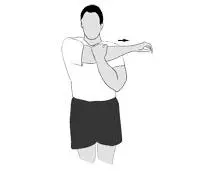
Lateral raise
- Place a resistance band at hip height and fasten it or loop it around a fixed item as you stand next to it.
- Take hold of the band with the hand that is opposite the object that is supporting you, and bring it to rest at your side, slightly in front of your body.
- Raise the band sideways and away from your body starting from a solid, stable base.
- Hold the band in place as you raise it to be parallel to the floor, then lower it back down.
- Then return to your neutral position.
- Then relax.
- Repeat this exercise 5-10 times a day.

Wall Push Ups
- Raising your arms upward until your hands have little contact with the wall, facing the wall, and bending your elbows straight.
- With both hands at shoulder height on the wall, maintain the extension position of all your fingers.
- Feel free to adjust your reach if necessary, and go cautiously toward the wall.
- Gently bend your body toward the wall until your nose touches it, and then slowly extend your elbow.
- Keep your back straight and bend your elbows at a 45-degree angle instead of straight out to the sides.
- Then return to your neutral position.
- Then relax.
- Repeat this exercise 5-10 times a day.
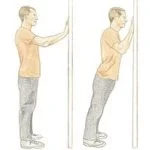
What safety precautions must be taken before exercising?
- Maintain a straight posture when working out.
- While starting any exercise, usually warm up and stretch.
- Eat anything light before exercising. Exercise while you’re not hungry, but also refrain from eating straight after.
- Bend and stretch slowly and gently.
- It may be challenging to stretch the tight muscles in your joint, but doing so is normal and required. Stretching and exercise shouldn’t hurt or make you feel as though someone is stabbing you because they are unhealthy and worsen your condition.
- Along with doing the required number of repetitions for each exercise, stretching should be done according to the protocol before and after sets.
- Avoid taking on challenging tasks.
- Take a break in between workouts.
- For the best possible training experience, dress comfortably in loose, casual attire that encourages relaxation and the full range of motion.
- When exercising, try to avoid making unexpected or strong movements.
- If you have difficulty with a particular movement, track your improvement by keeping a weekly journal of how the activity gets better.
- If the pain is really bad, stop right away.
When are you going to stop working out?
- Fever
- Severe burning in the muscles.
- You don’t feel good.
- If numbness or pain are present.
- Exercise should be stopped if it hurts.
- Headache
Prevention:
In general, there are several ways to reduce your risk of getting arthritis;
- Exercising without weight bearing and with minimal effect.
- Keeping a healthy weight in consideration.
- lowering the chance of joint damage. You should minimize or stay away from activities that put your shoulder at risk of harm.
Summary:
Your shoulder joint becomes inflamed when you have shoulder arthritis. Loss of cartilage occurs with arthritis over time. Your shoulder joint may hurt, feel stiff, have a reduced range of motion, and make popping, clicking, or grinding noises.
Stretching and strengthening the surrounding muscles is crucial when you have arthritis (OA) in the joints of the shoulder because it increases support and lowers joint stress.
If you have arthritis, you may find that many moves are painful or uncomfortable when performed quickly. With slow, careful movement and stretches, these workouts will strengthen your shoulders and relax stiffness and tension.
Frequent exercise can keep the shoulder joints moving, which can significantly improve the range of motion and lessen pain in this part of the body. To prevent further harm to the surrounding tissues or joints, people should exercise carefully.
FAQ:
Shoulder arthritis: is it a dangerous condition?
However, the common cartilage loss associated with shoulder arthritis, like that of hip and knee arthritis, typically leads to severe discomfort, limited function, stiff joints, and a significant degradation in quality of life.
Is it possible to cure arthritis?
Arthritis cannot be cured. By reducing pain and inflammation through exercise and certain methods, physiotherapy can help keep joints functioning. concentrated on developing a therapy and medication-based treatment plan with your physician and physiotherapist. centered on modifying your lifestyle to enhance your standard of living.
Does arthritis improve with exercise?
Exercise that is good for your joints can improve your function, happiness, quality of life, and ability to manage pain if you have arthritis. Low-impact physical activities that are good for joints lower body weight and minimize the chance of injury.
What are some of the things that make shoulder arthritis worse?
The pain can often spread down the arm or, in more severe cases, down to the elbow and wrist. It can also get worse when lifting, carrying heavy objects, or after exercising.
If you suffer from shoulder arthritis, should you lift weights?
Increasing bone density and muscular mass is mostly dependent on strength training. You might think that lifting weights is out of the question if you have arthritis in your shoulder. Still, that isn’t truly correct. Exercises that don’t involve lifting weights beyond your shoulders or result in further soreness should be your main focus.
When I have shoulder arthritis, how should I sleep?
Those who sleep on their side should lie on the side that is not uncomfortable and elevate the painful shoulder by placing a big pillow under their arm. If you can, try to reposition the shoulder rather than allowing it to go forward.
References:
- D. Prajapati (2023h, Sept. 30). Samarpan Physio’s Top 24 Shoulder Arthritis Exercises. Physiotherapy Clinic in Samarpan. The top 24 shoulder arthritis exercises are available at https://samarpanphysioclinic.com.
- The Ultimate Workout Plans for Shoulder Osteoarthritis. (n.d.). Special Surgery Hospital. The exercises for shoulder osteoarthritis are available at https://www.hss.edu.
- DiGiacinto, J. (2021, September 30). Shoulder Arthritis: Five Types. health line. Types of Shoulder Arthritis: https://www.healthline.com/health/osteoarthritis/diagnosis
- Editor-in-chief of WebMD. (2024, August 15). The Best Exercises for Arthritic Shoulders. WebMD. Best exercises for shoulders with arthritis: https://www.webmd.com/arthritis
- A. Kandola (2023, Feb. 16). Seven shoulder arthritis exercises. Article 322998 from Medical News Today
- Shoulder Arthritis. May 1, 2024. 22491-shoulder-arthritis, Cleveland Clinic, https://my.clevelandclinic.org/health/diseases

